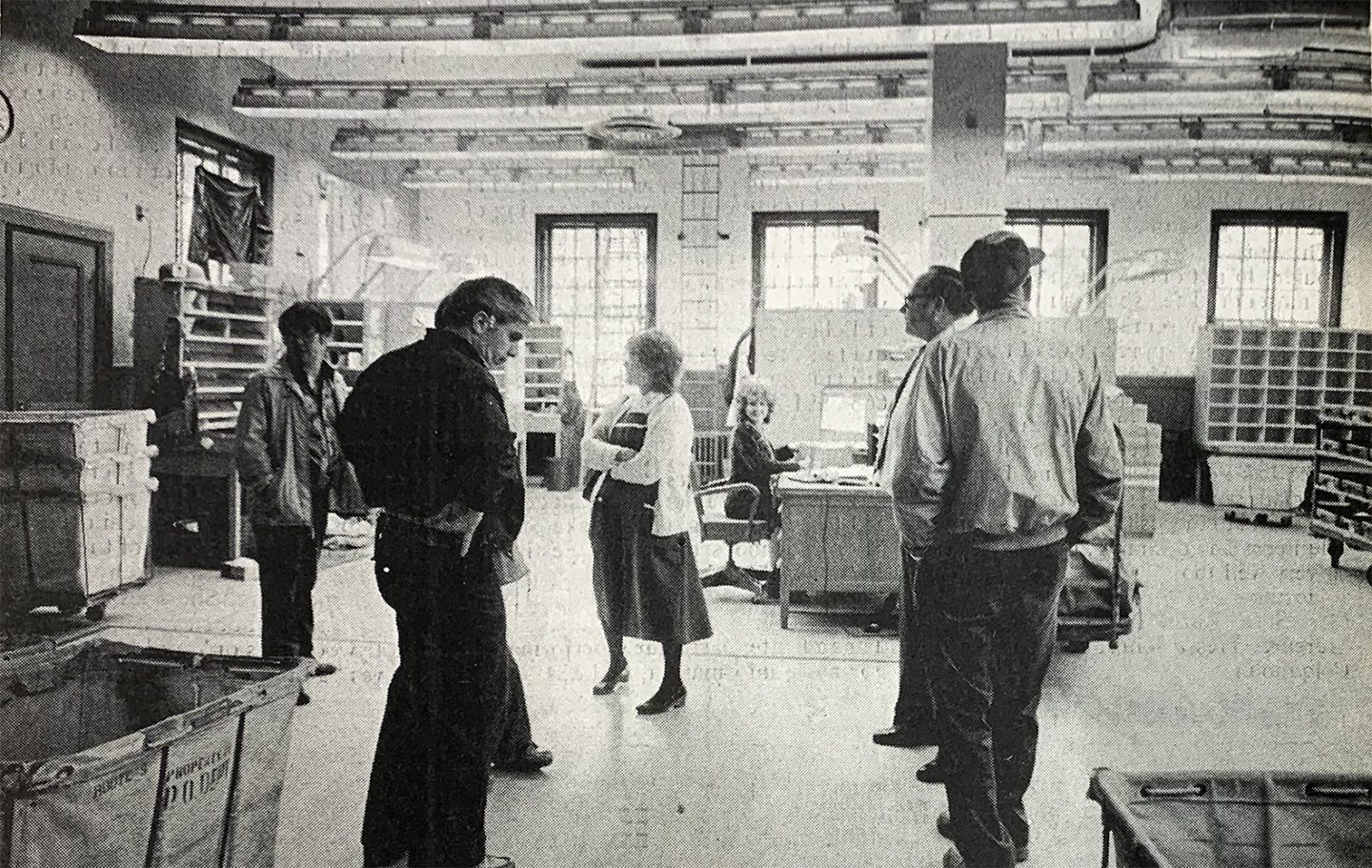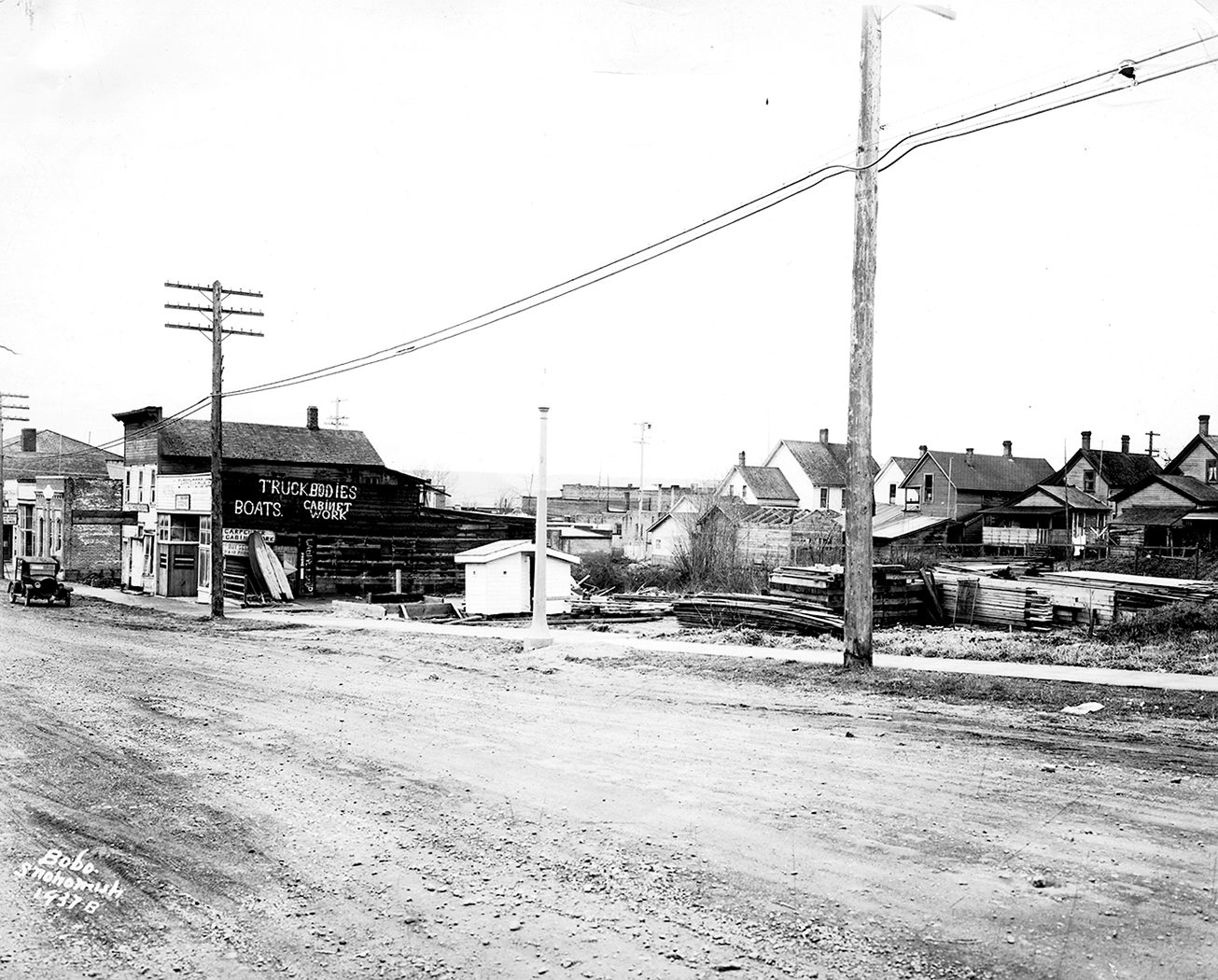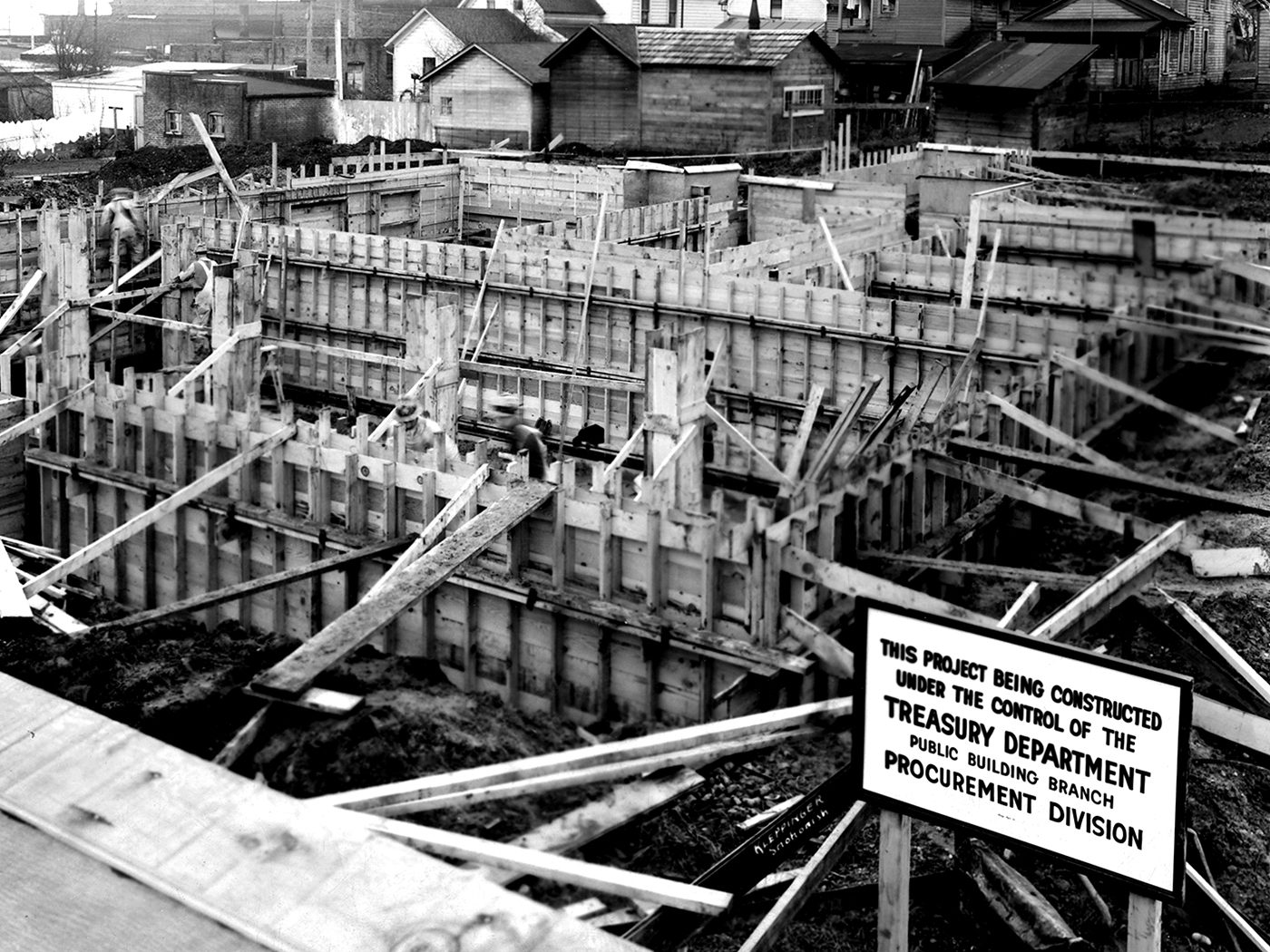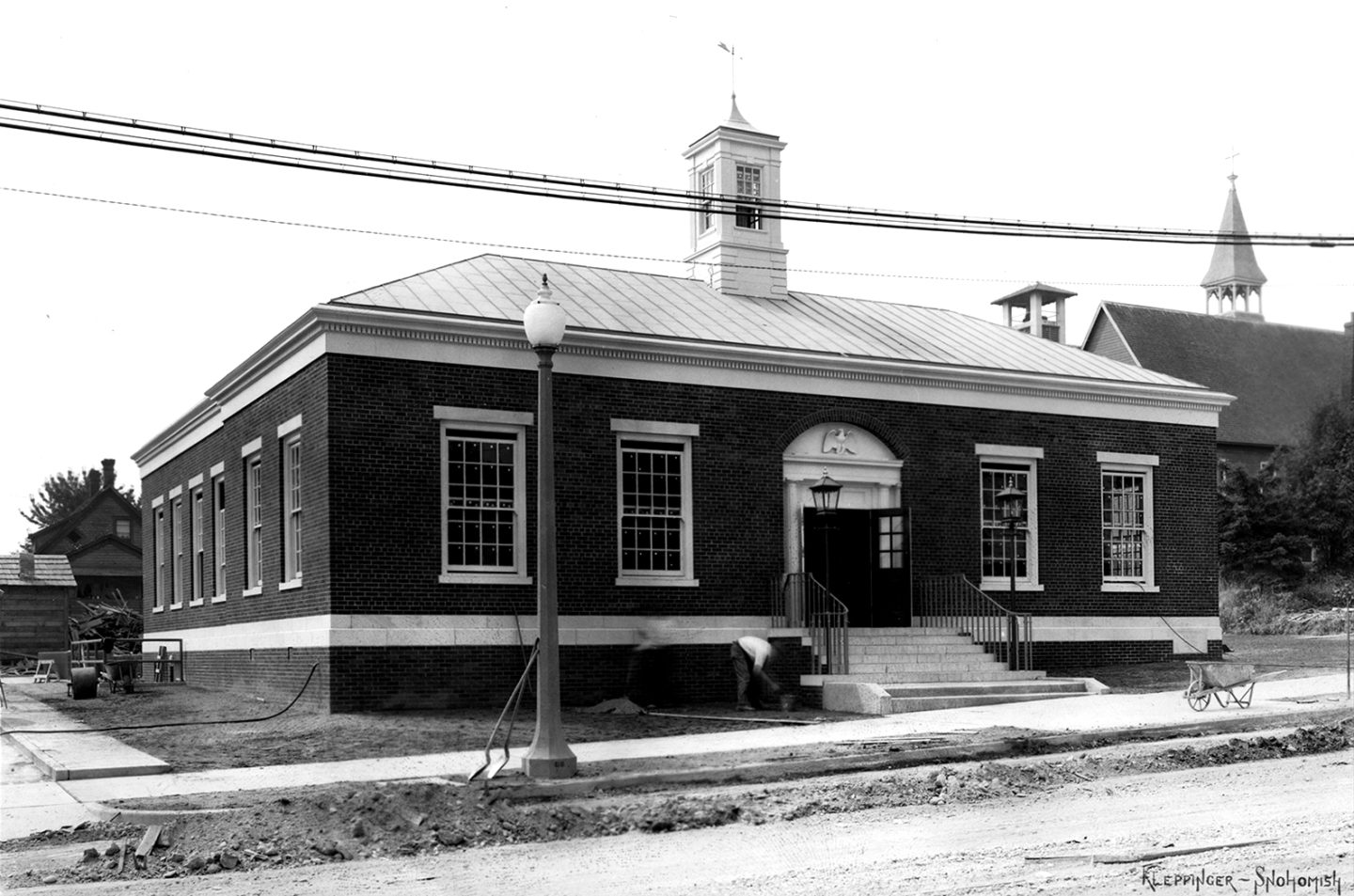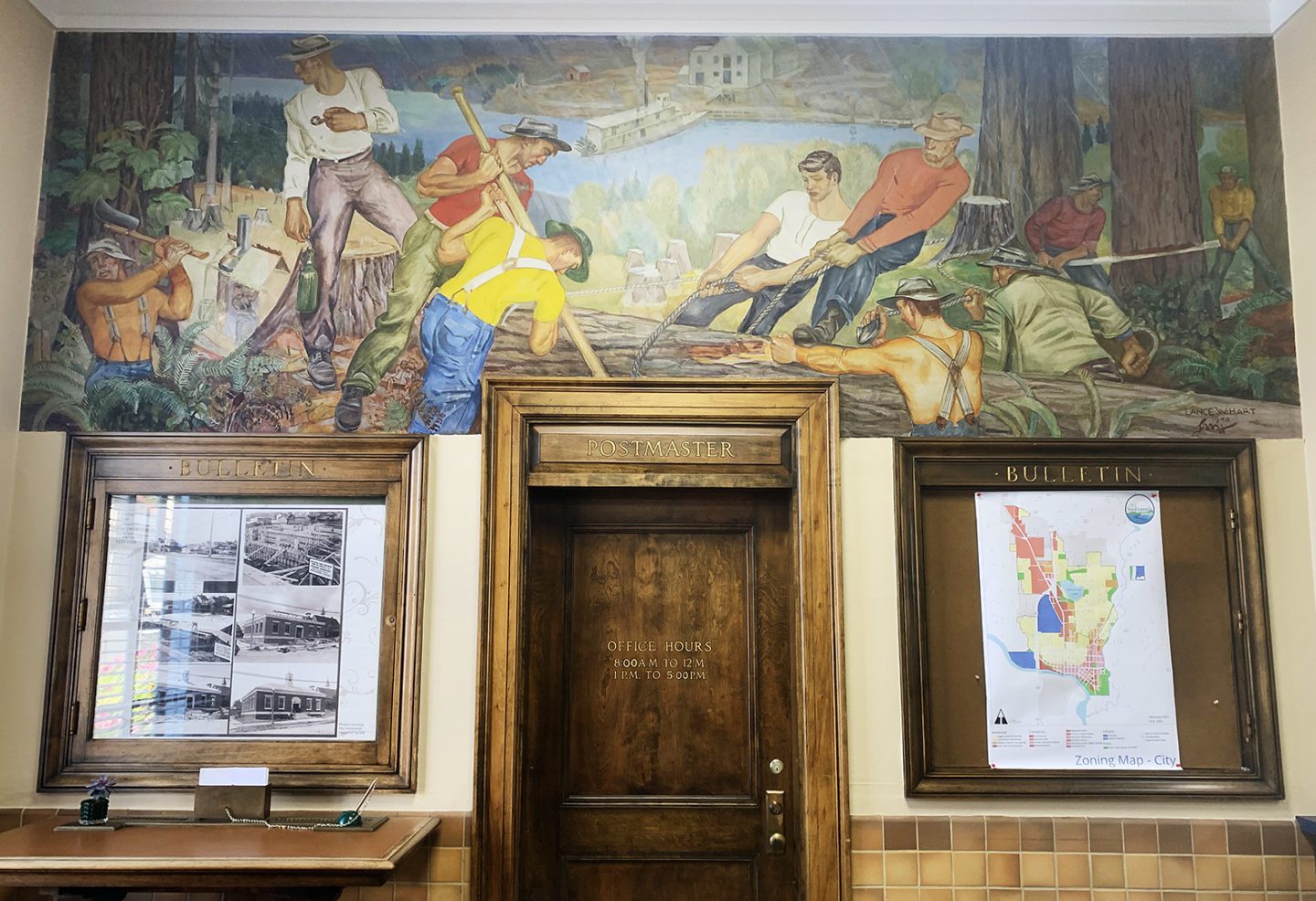-
City Hall
116 Union Avenue
The functionality of the first city hall on First Street built in 1927 went from inefficient to an embarrassment by the 1980s, so when the post office moved to a strip mall north of downtown, city council members seized the opportunity to purchase the faux colonial style structure surrounded by a parking lot, for $260,000, a deal finalized with the mayor’s signature on August 21, 1984. On weekends, parking is available in the parking lot.
Post Office Building (1937) — The news of $80,000 coming to town for a new Post Office broke on the front page of the Snohomish County Tribune’s July 16, 1936, issue. Snohomish Postmaster Cochran was accepting submissions from landowners who had property for sale that fit the specifications required by the Treasury Department, and by attendees at a mass meeting who favored a downtown location.
A banner headline on December 17, 1936, heralded “… UNION AVE …” as the site for Snohomish’s new Post Office. “The Treasury Department’s procurement division has agreed to pay the $3,700 asked for the land located on the west side of Union Avenue between First and Second Streets, property managed by Ralph Main, the pharmacist doing business in Lot Wilbur’s original drug store building.” The editor wrote, in a gently scolding tone, the decision “sets at rest the many rumors and arguments … there is no point in continuing the discussion further.”
“Start Work On New Post Office …” was the news on December 2, 1937, beginning with excavating to a depth of seven feet. A completion date was set for fall 1938; however, plans to lay a cornerstone for the new Federal Building were set for May 4 with a parade led by the Members of the Masonic Lodge down First Street to Union “and thence to the new post office building.” A May 5 editorial championed the laying of the cornerstone as a record to be discovered in the distant future “if the day demands the building be removed to make room for more modern structures.”
A strong turnout of Snohomish residents, along with a gathering of federal, state, and county dignitaries, were given their first look inside their new post office building on August 19, 1938. It was an opportunity to shake the hand of Congressman Mon C. Wallgren of Everett, who was instrumental in obtaining the building for the city. A new-deal Democrat, Wallgren went on to serve as Washington’s 13th governor in 1944.
It was not until 1940 that artist Lance Wood Hart left his Oregon studio for Snohomish to install the painting he was commissioned to create for the new Post Office by the Treasury Department’s Section of Fine Arts. The principal objective of the program was to commission artwork that met high artistic standards with the intention of boosting the morale of the American people by depicting uplifting subjects the people knew and loved. Hart’s painting of oil and canvas is titled “Construction of a Skid Road.” Born in Aberdeen (1891), Hart studied at the Royal Academy in Sweden in the 1920s. There he befriended Robert Motherwell, who also came from Aberdeen and went on to become a leading Abstract Expressionist. Hart was teaching painting and drawing at the University of Oregon when he was awarded the prestigious commission. He died the following year in 1941.
Proceed down Union Street toward First Street and turn left.

